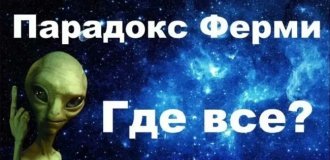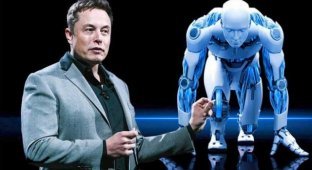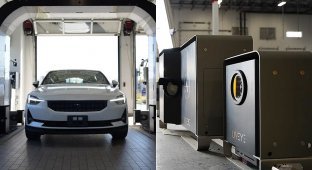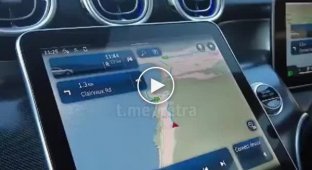According to futurologist Ray Kurzweil, by 2029 artificial intelligence will be able to pass the Turing test - and it will be impossible to distinguish machine consciousness from human consciousness 
According to futurologist Ray Kurzweil, by 2029 artificial intelligence will be able to pass the Turing test - and it will be impossible to distinguish machine consciousness from human consciousness. And quantum computers have long ceased to be something outlandish. Over the past half century, technology has changed so rapidly that today it is difficult for us to imagine the "great-grandfather" of the modern smartphone or laptop - a device weighing 30 tons, occupying several rooms.
When the first computer appeared
Since ancient times, people have faced the need to solve problems that required complex calculations. It was necessary to carry out land surveying, trade, collect taxes, manage crop reserves, travel. At first, they counted on fingers, stones, knots, and then they invented the first abacus and slide rules. By the way, the word "computer" itself (from the English compute - "to calculate") has long been used to describe a person who makes calculations.
In the Middle Ages, it became clear that special machines were indispensable. This is how the first adding devices and adding machines appeared. The prototype of the future electronic adder - the most important element of future computers - was described by Leonardo da Vinci. In 1969, IBM specialists reproduced da Vinci's machine based on the drawings and once again became convinced of the scientist's genius.
Then there was Wilhelm Schickard's calculating machine, Blaise Pascal's adding machine (the famous "Pascaline"), Gottfried Wilhelm Leibniz's calculating machine, and similar inventions by other scientists.
Where did the idea of programming computing operations come from? It's simple: it was necessary to constantly adjust the mechanisms of tower clocks to the bell system. In addition, similar problems arose in other industries, for example, in the clothing industry. In 1804, Joseph Jacquard's punch cards for weaving machines appeared, which are considered the first device for memorizing and entering information.
But the closest to creating a computer was in the 19th century, Professor of Mathematics at Cambridge University Charles Babidge, who developed the basic principles of building computers, including program control, the use of punch cards and dividing information into different types. And the first programmer in history is considered to be Babidge's associate Ada Lovelace, the daughter of the famous poet Byron. Unfortunately, it was not possible to implement all the ideas of the Cambridge professor - this required too much expense, but his contribution to the development of computing technology is difficult to overestimate. Two of his machines - the difference (1822) and the analytical (1830) - were ahead of their time.
Almost another hundred years passed before a full-fledged computer in the usual sense of the word appeared. The world's first computer is considered to be the ENIAC machine - a project of American scientists John Mauchly and John Eckert, which they presented in 1942. But ENIAC did not appear on its own: several machines appeared at about the same time, which, with a reservation, can also claim to be the first computer.
The ingenious machine of Semyon Korsakov
The 19th century had its own Charles Babidge — Semyon Korsakov, a nobleman and successful statesman who, in addition to homeopathy, was also interested in inventing intelligent machines.
In 1832, Korsakov published a brochure, “Outline of a New Method of Research Using Machines Comparing Ideas,” and presented it to the Academy of Sciences. He proposed using punch cards to store and code information — those same wooden plates with holes that were then used only in Jacquard looms.
There were five machines in total: a linear homeoscope with fixed parts, a linear homeoscope with moving parts, a flat homeoscope, an ideoscope, and a simple compator. All the machines helped not only to organize, but also to compare large volumes of data. Korsakov himself used them to compile a database of homeopathic medicines. The scientist asked himself the question, "How can I find the right medicine for a patient?" And he found the answer: you need to "type" the entire picture of the disease on a wooden plate, for example, nausea, headache, temperature, and compare whether the retractable pins match the holes in the punch card.
But then no one appreciated Korsakov's ideas, the invention was rejected, although in this way it was already possible to classify almost any information, including military information. The scientist himself also understood that the time for his machines had not yet come.
Who invented the computer
Despite the fact that Charles Babidge is considered the founder of the idea of the first mechanical computer, it was only in the 1940s that people seriously thought about the need to build powerful machines capable of automatically performing complex technical calculations. And there was a good reason for this - World War II. The ability to encode and decode large amounts of information gave an undeniable advantage in military operations. Developments were carried out in different countries, so several scientists at once claimed the role of the founding father of the computer.
Konrad Zuse
The German engineer Zuse is often called the inventor of the computer. He was the first to combine arithmetic and logical operations in a calculator, introduced the term "machine word", and also invented the programming language Plankalkul. In 1938, his Z1 program-controlled machine was ready. Today, its recreated model is kept in the Museum of Computing in Paderborn, Germany.
The scientist built the Z1 in the living room of his parents' house, it fit into an area of about 4 square meters and was completely mechanical, on a lever basis. Then there were the Z2 models, which already used electromagnetic telephone relays, and the Z3, which multiplied two numbers in five seconds. The latter was used to design the V-2 cruise missiles.
It is the Z3 that is considered the first working programmable computer. The Z4 was supposed to be an even more powerful machine, but in 1942 the leadership of the Third Reich was confident that the war would soon end, and did not consider it necessary to invest money in long-term projects.
During the bombing of Berlin, all of Zuse's machines were destroyed, with the exception of the unfinished Z4 model, which the scientist managed to take to the Alps. Zuse's machines are sometimes referred to as "Hitler's computers" (due to the source of funding), but Zuse himself was not a party member and, according to rumors, did not share the ideology of fascism.
John Atanasoff
American physicist John Atanasoff published the concept of a modern computing machine in 1939, where calculations are performed using logical (not mathematical) operations and where the binary system of calculation is used.
In the same year, together with his partner Clifford E. Berry, he built the ABC (Atanasoff Berry Computer), which was capable of solving linear equations with several dozen unknowns. It is called the first electronic computer. The ABC's operational memory was made on a rotating drum with capacitors, and the arithmetic unit was made on radio tubes. Data was entered using punch cards. But the project was never completed because the United States entered the war and Atanasoff transferred to serve in the naval laboratory.
At the same time, in 1973, the US District Court in Minneapolis recognized that the main ideas of J. Mauchly, later implemented in ENIAC, were received from Atanasoff.
Alan Turing
Anyone who is even slightly interested in computer science and IT has come across the term "Turing machine". Alan Turing is an English mathematician, the author of the very test that artificial intelligence should successfully pass by 2029.
In 1936, 24-year-old Turing published a work in which he described a device for solving a problem of mathematical logic, creating the first model of universal computations. In essence, he explained that a machine can solve any problem, provided that it (the problem) can be algorithmized.
A Turing machine consists of a program, a tape with cells, an automaton or head for reading and writing. Data is fed to the tape, which is divided into cells, each of which either contains a symbol or is empty. The machine can process symbols, erase or write them according to instructions inside the memory. Writing, calculating and shifting - these are the three operations that the Turing machine repeats. This algorithm is still used today to evaluate the capabilities of quantum computers.
John Mauchly and John Eckert
Americans Mauchly and Eckert in 1945 presented the ENIAC (Electronic Numerical Integrator and Calculator) computer - the first electronic digital computer for a wide range of tasks, worked entirely on electronic circuits.
The project, developed back in 1942, lay idle until the American military became interested in it. Under conditions of strict secrecy, the machine weighing 30 tons and occupying an area of almost 300 square meters was assembled by more than two hundred specialists.
ENIAS worked on lamps (there were 17,468 of them!) and could perform 5 thousand addition operations per second. True, the lamps had to be changed all the time because they burned out, and this significantly complicated interaction with the computer.
The world's first computer, ENIAS, was ready after the end of World War II, and it was immediately used in work on creating a hydrogen bomb.
The first computer in the USSR
In our country, the history of computing began in 1948. The authors of the first project of an automatic digital computer were Isaac Brook and Bashir Rameev. On December 4, they received an author's certificate for their invention, so this date is considered the unofficial birthday of computer science.
Rameev and Brook were inspired by the idea of ENIAC, but they emphasized that the endlessly breaking vacuum tubes should be replaced with miniature semiconductor diodes, which could later be used not only for stationary, but also for mobile computers. However, the M-1 computer was only assembled by December 1951.
And in 1948, Sergei Lebedev, director of the Institute of Electrical Engineering of the Academy of Sciences in Kyiv, began working on a small electronic computing machine MESM, which would eventually receive the status of the first electronic digital computer in the Union; it would be released several months earlier than the M-1.
MESM was located on an area of 60 square meters. 6 thousand electron tubes and a three-address command system allowed 50 operations per second to be performed, but the machine had no external memory. MESM was not launched into serial production, but most of the first Soviet programmers were trained on it. Later, under the leadership of Lebedev, 15 types of computers were created - from vacuum tube computers to supercomputers on integrated circuits.
The first personal computer
In the 1980s of the last century, the era of personal computers began - small-sized machines that could be used by people without specialized education.
In order to reduce the hardware of the computer several times, microprocessors were needed. Intel first began producing them in 1971. At a cost of $200, the four-bit Intel 4004 outperformed ENIAC in performance — it performed 60 thousand operations per second.
The first personal computer that was widely distributed was released in 1981 by IBM. The PC 5150 model had a memory capacity of 64 kilobytes, and the hard drive in it was replaced by small floppy disk drives.
But back in 1977, one of the successful personal computers of that time was introduced — the Apple II, which then successfully sold in various variations for 16 years.
The first Soviet PC is considered to be the Agat PC from 1982, which was based on a microprocessor similar to the one in the Apple II. But even after that, the country did not experience a computer boom like in the USA. Apparently, it was believed that Soviet citizens simply did not need high-tech machines at home - after all, they were not a refrigerator or a TV. However, this did not stop folk craftsmen - self-taught engineers, showing miracles of ingenuity, assembled their own computers according to drawings that were published in foreign magazines.
Simple comparator 
Photo of the M-1 digital computer 
Car model Turing 
Photo of the Z4-1 computing machine 
IBM quantum computer 2020 
[thumb]https://cn22.nevsedoma.com.ua/p/28/2839/133_files/3fa3028f0f46cc6d8c1f7841b6902330.webp[/thum b]
[thumb]https://cn22.nevsedoma.com.ua/p/28/2839/133_files/1e5dde2357c27ccb54802fdd8a3d2178.webp[/thumb] 
Add your comment
You might be interested in:


























